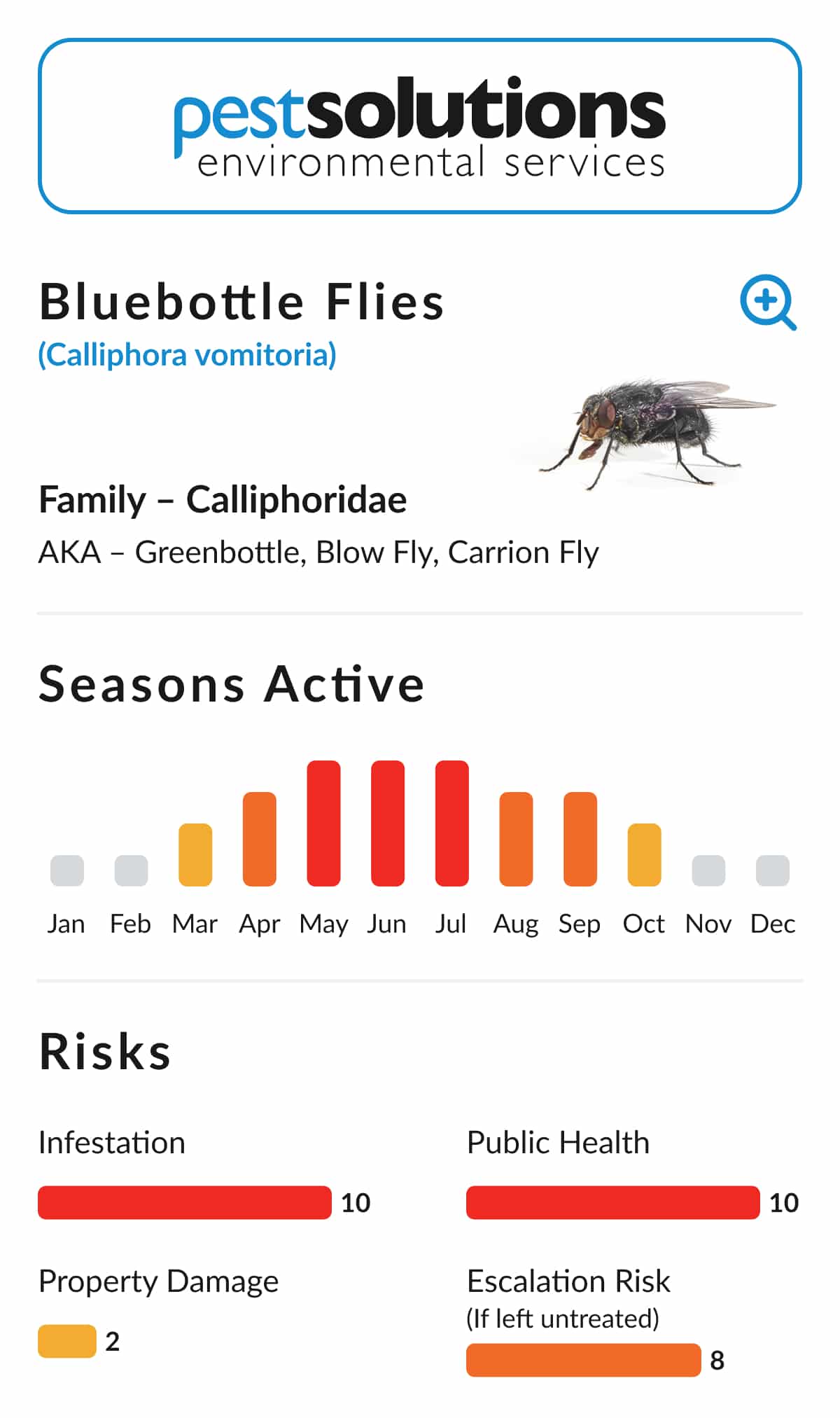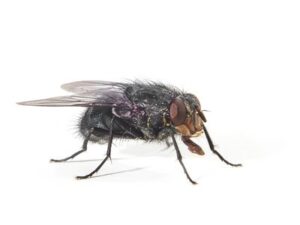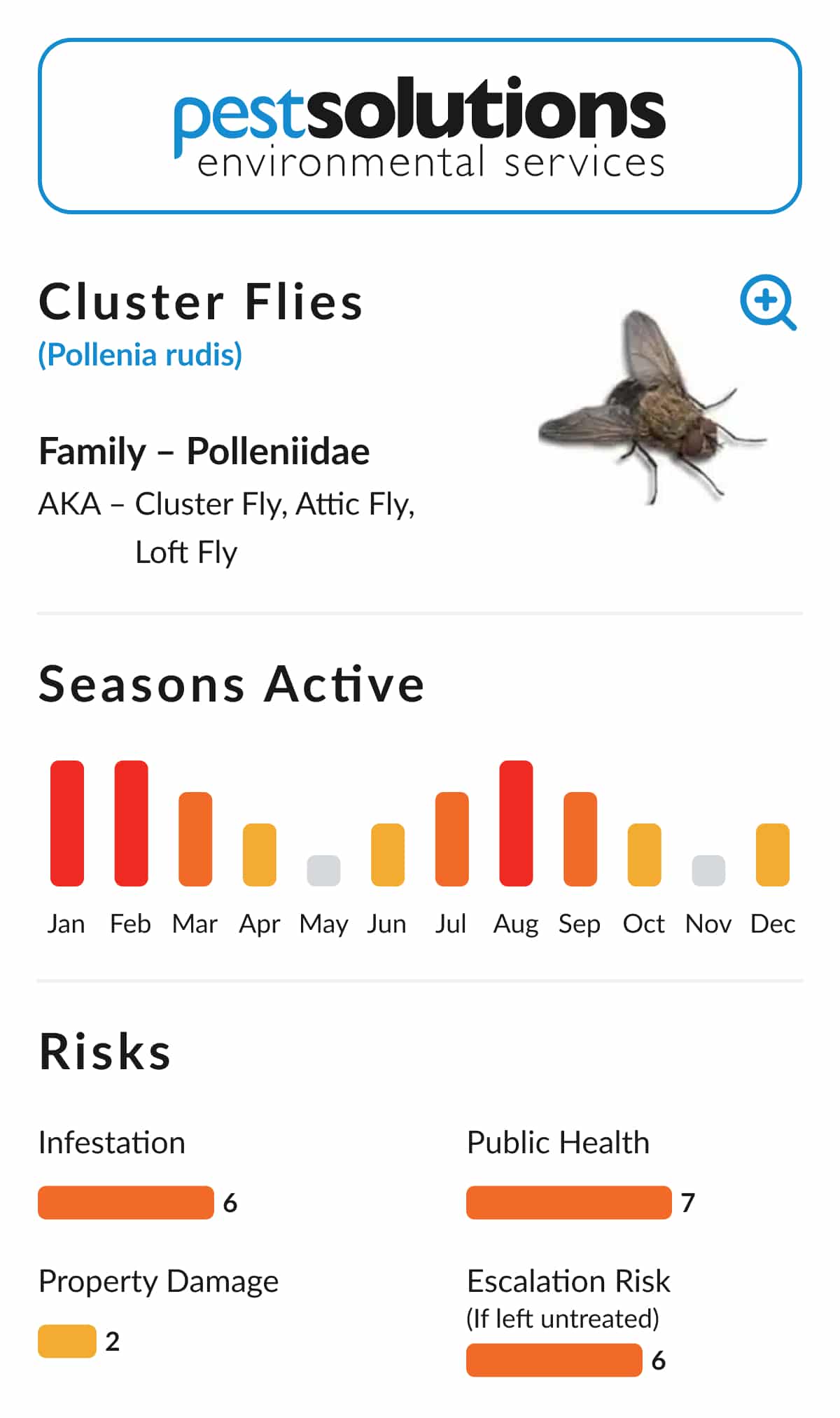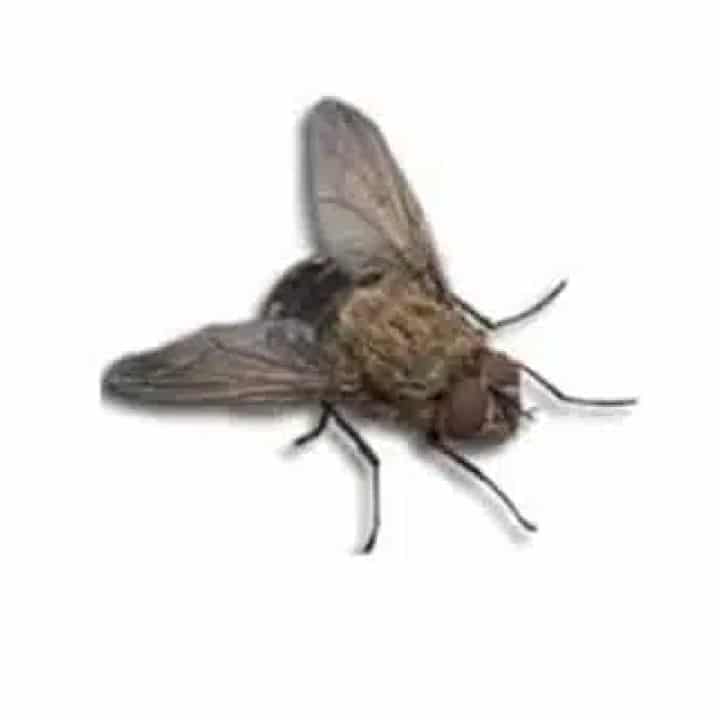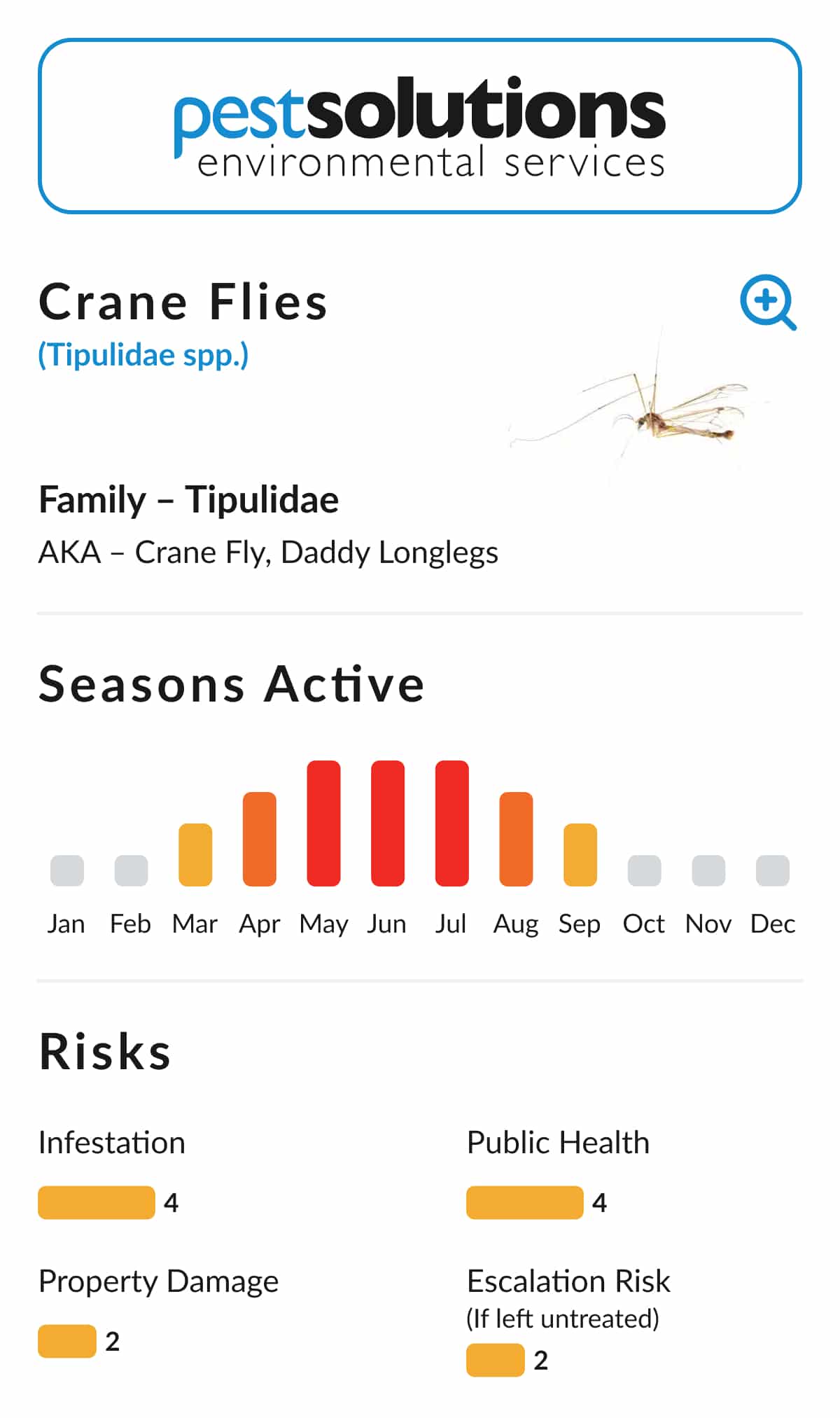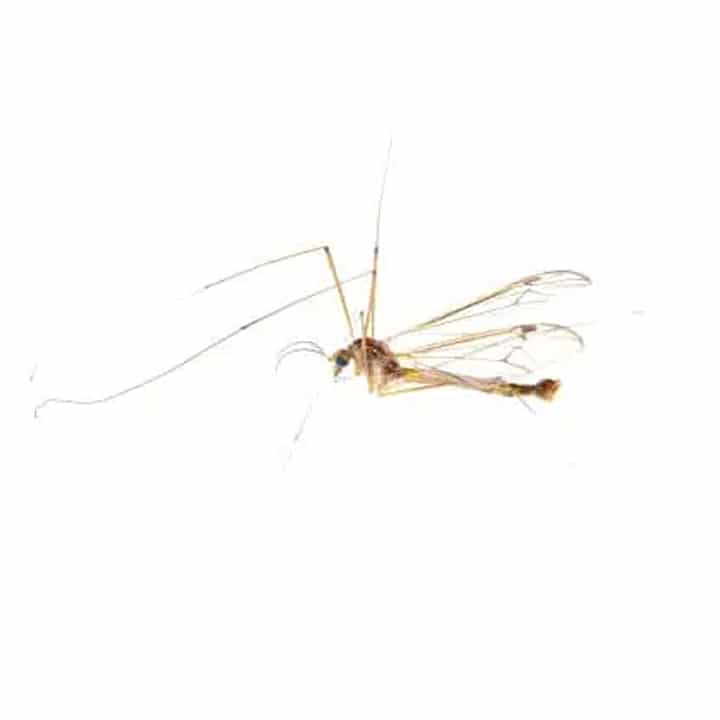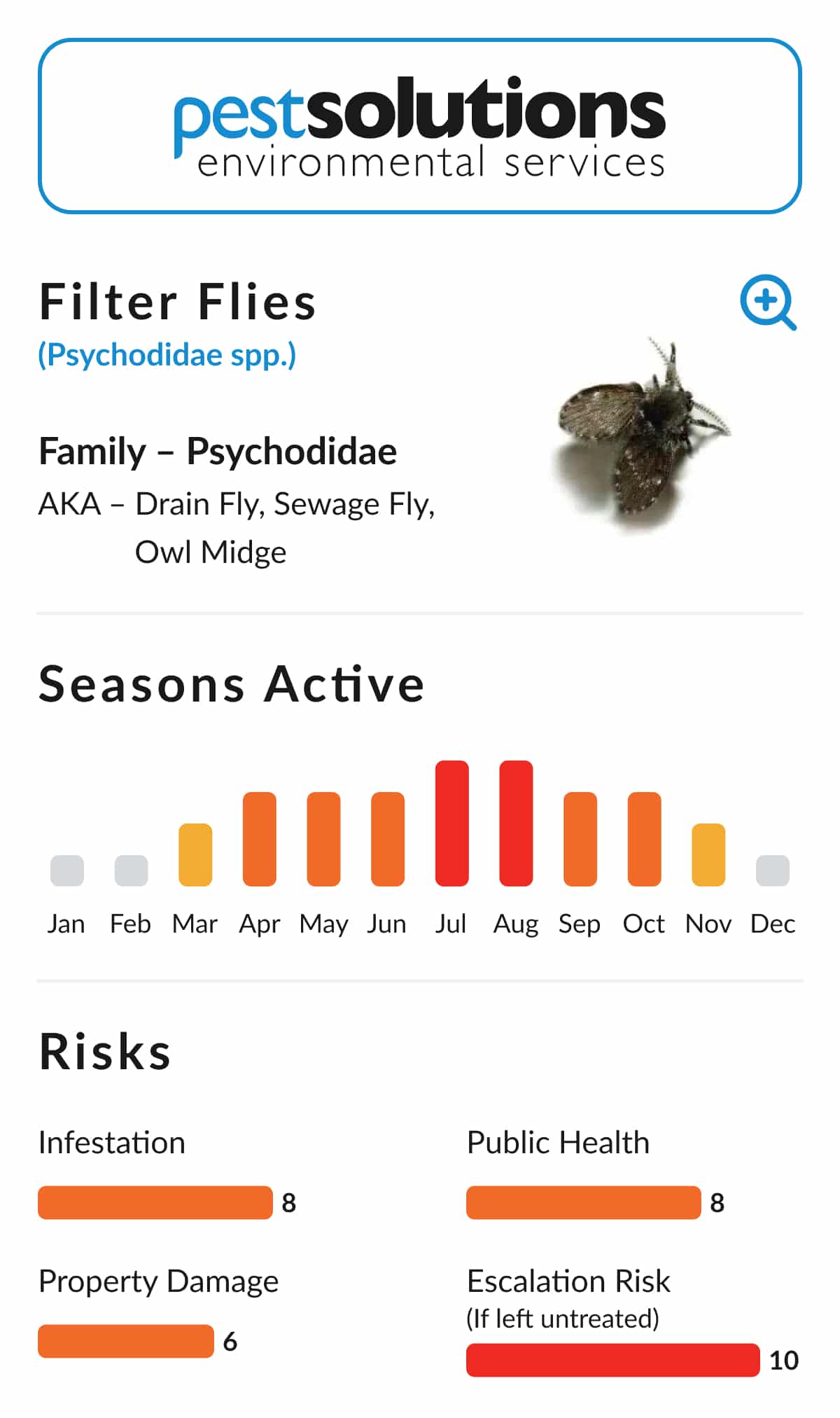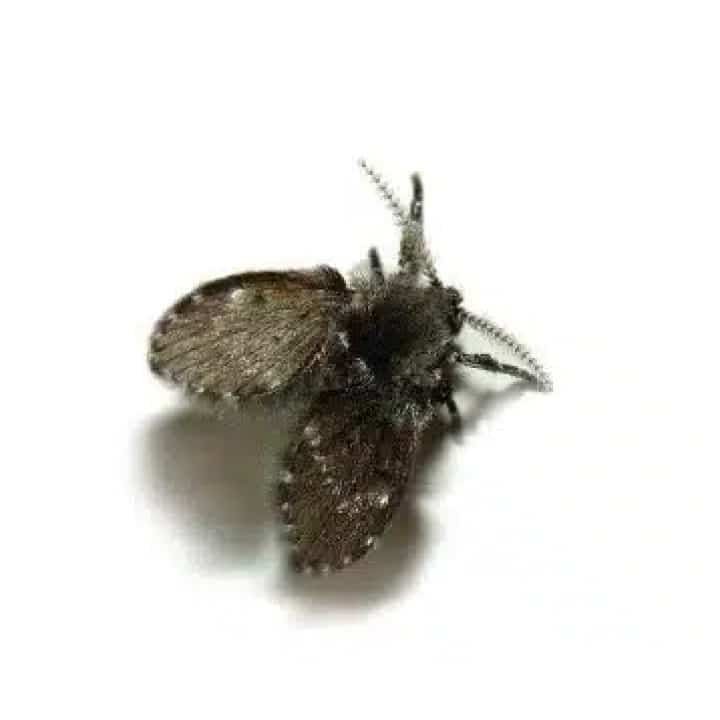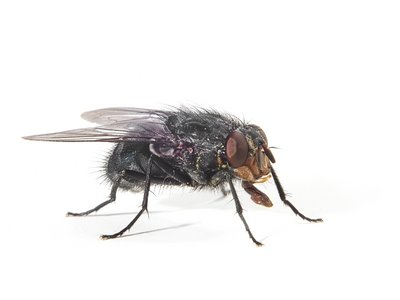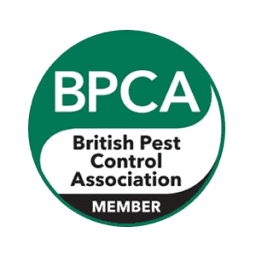Habitat and Distribution – Bluebottle Flies (Calliphora vicina and Calliphora vomitoria)
Bluebottle flies are widespread and common throughout the UK and Europe. They breed primarily on dead and decaying animal matter, including carcasses and meat offal. In human environments, they are often attracted to uncovered meat and waste bins. Indoors, infestations may also occur in response to decomposing animal remains, such as rodents following pest control treatment. These flies are especially active in warmer months but can emerge as early as January or February during mild winters.
Biology – Bluebottle Flies (Calliphora vicina and Calliphora vomitoria)
Bluebottle flies undergo a complete life cycle that includes egg, larva, pupa, and adult stages. After emerging from the pupae, adult flies mate, and the female begins laying eggs within 4–5 days. Eggs are laid in clusters on exposed or decaying meat, meat products, offal, or even faeces — a process known as “blowing.” The creamy-white eggs hatch in less than a day, and the larvae immediately burrow into the food source, breaking it down through enzyme secretion and bacterial action. These larvae, commonly referred to as maggots or “gentles,” go through three molts during development, typically reaching full size within a week. At this stage, they leave the food source and search for a suitable pupation site, often travelling up to 100 metres if necessary. Pupae are around 10 mm long and mahogany brown in colour. Adult flies emerge approximately two weeks later, though this can vary with temperature. In mild winters, the life cycle can be completed earlier, especially if larvae overwinter and pupate in early spring.
Why They’re a Problem – Bluebottle Flies (Calliphora vicina and Calliphora vomitoria)
While bluebottles serve an ecological role in decomposing dead animals in rural settings, they pose a major risk in food-handling environments. Their tendency to “blow” meat and meat products — even when concealed — renders these items unfit for consumption. Their presence is especially concerning in butcher shops, commercial kitchens, abattoirs, and waste collection points. Additionally, infestations may arise indoors following rodent control treatments, as dead rodents attract egg-laying females. This potential for contamination and food spoilage makes the species a serious hygiene pest.
Control and Prevention – Bluebottle Flies (Calliphora vicina and Calliphora vomitoria)
Effective bluebottle fly control depends on rigorous hygiene practices and physical exclusion measures:
- Screen windows and doors with fly mesh to prevent indoor access
- Cover meat and animal waste to deny flies egg-laying sites
- Remove waste frequently and ensure bins are sealed
- Use residual insecticides on walls and resting surfaces to control adult flies
- Apply space sprays or aerosols (e.g. pyrethroid-based) for rapid knockdown of visible adults
- Install UV light electric fly killers where appropriate for ongoing monitoring and control
Maintaining strict hygiene and structural proofing is the best long-term strategy for preventing infestations.
Professional Support – Bluebottle Flies (Calliphora vicina and Calliphora vomitoria)
If you’re experiencing persistent problems with Bluebottle Flies in your kitchen, food business, or commercial facility, Pest Solutions can help. We provide expert identification, hygiene inspections, and targeted treatment plans tailored to your environment.
